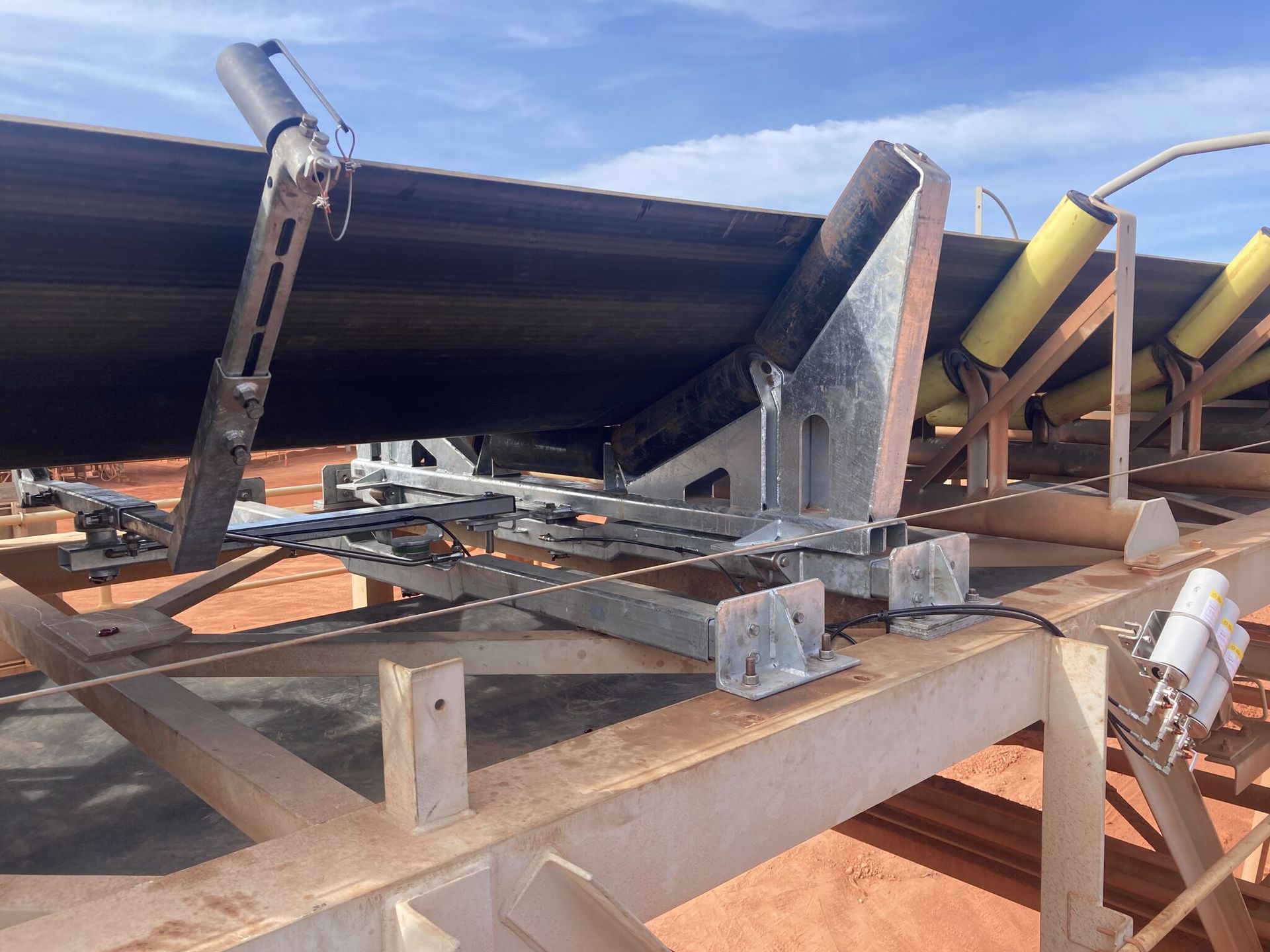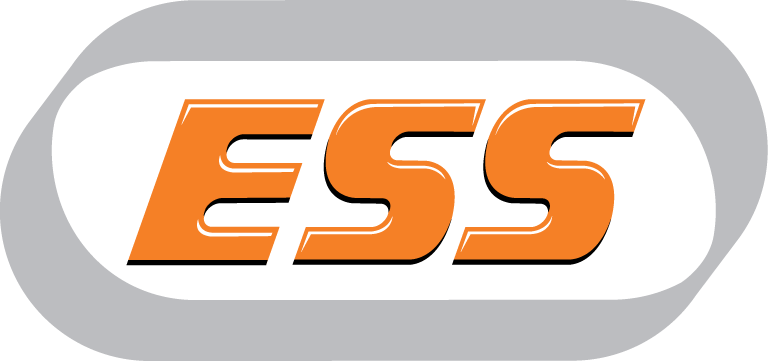Conveyor Belt Tracking & Alignment
Reduce spillage and prevent belt damage
Belt drift is the tendency of the belt to move from the conveyor structure’s centerline. All conveyor systems are designed to allow for some belt drift during regular operation.
If the belt mis-tracks outside these parameters, spillage and belt damage can occur to the conveyor structure, belt, and conveyor components. This ultimately results in interruption to production, increased safety issues, compromised WHS, environmental contamination, manual handling issues, conveyor maintenance, clean-up and increased replacement expenses.
ESS Belt Trackers automatically sense and continuously correct conveyor belt mistracking. This efficient unit reduces spillage, prevents damage to the belt or structure, extends belt life and improves operating efficiency on all belts under all conditions.
Features and Benefits
Multi-pivot design
The multi-pivot design allows the rollers to move perpendicular to the structure’s centerline while directing the steering idler to the proper angle instead of pivoting and pinching the belt edge.
Constant belt alignment
Continuous precision adjustment of the patented parallel steering system keeps the belt tracking correctly.
Precision belt alignment
ESS Tracker’s tie rod aligner translates belt action into correcting force, providing continuous precision adjustment.
Unit Options
Depending on the root cause and location of the initial mistracking, belt tracking units may need to be installed on either the return or carry sides of the belt.
Standard and heavy-duty options
Standard Duty Belt Trackers are available in upper and lower units for belt widths between 600-1350 mm.
Heavy-duty belt Trackers are available in upper and lower units for wider belt widths, higher speeds and thick belts.
OPTIONAL SAFETY FEATURES
eNCHANCED SAFETY RETROFIT KIT
Tethers major parts of the tracker assembly together, reducing the risk of falling objects.
ess qctm
ESS belt trackers can be combined with the ESS QCTM Retractable Idler frame to allow the safe withdrawal of the idlers from either side of the conveyor.

How does it works
ESS Belt Tracking Systems automatically sense and continuously correct belt mis-tracking. A light touch of the belt against the guide rollers creates precision correction.
The patented tie rod aligner translates the action of the guide roller pivot assembly to the training idler. The upper guide unit is used on the carry side of the belt; the lower guide unit is used on the return side.
The client must supply a steering roller, typically the roller removed from the system will suffice. For greater efficiency of the TRACKER, ESS recommends the steering roller be coated with a rubber lagging.
Conveyor Belt Tracking Products
ESS belt trackers transfer the motion of mistracking to the steering idler through a parallel linkage. They use the force of the wandering belt against the guide rollers to position a steering idler and continuously correct the belt path.
Lower Belt Tracker
The Lower Belt Tracker unit is used on the return side. A steering roller must be supplied by the client. Typically, the roller removed from the system will suffice. For greater efficiency of the Lower Belt Tracker, ESS recommends the steering roller be coated with a rubber lagging.
Heavy Duty Lower Belt Tracker
The HD Lower Belt Tracker Systems automatically sense and continuously correct belt tracking. A light touch of the belt against the guide rollers creates precision correction. The patented tie rod aligner translates the action of the guide roller pivot assembly to the training idler.
Upper Belt Tracker
The Upper Belt Tracker unit is used on the carry side of the belt. A steering roller must be supplied by the client. Typically, the roller removed from the system will suffice. For greater efficiency of the Upper Belt Tracker, ESS recommends the steering roller be coated with a rubber lagging.
Heavy Duty Upper Belt Tracker
The HD Upper Belt Tracker System automatically sense and continuously correct belt tracking. A light touch of the belt against the guide rollers creates precision correction. The patented tie rod aligner translates the action of the guide roller pivot assembly to the training idler.
To learn more about our belt alignment product range, get in touch today.


